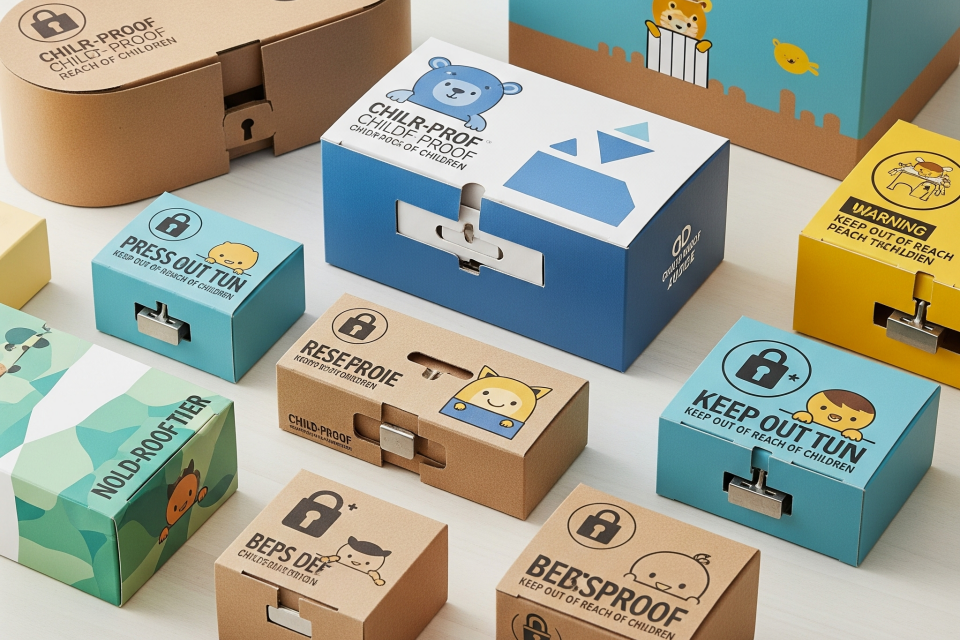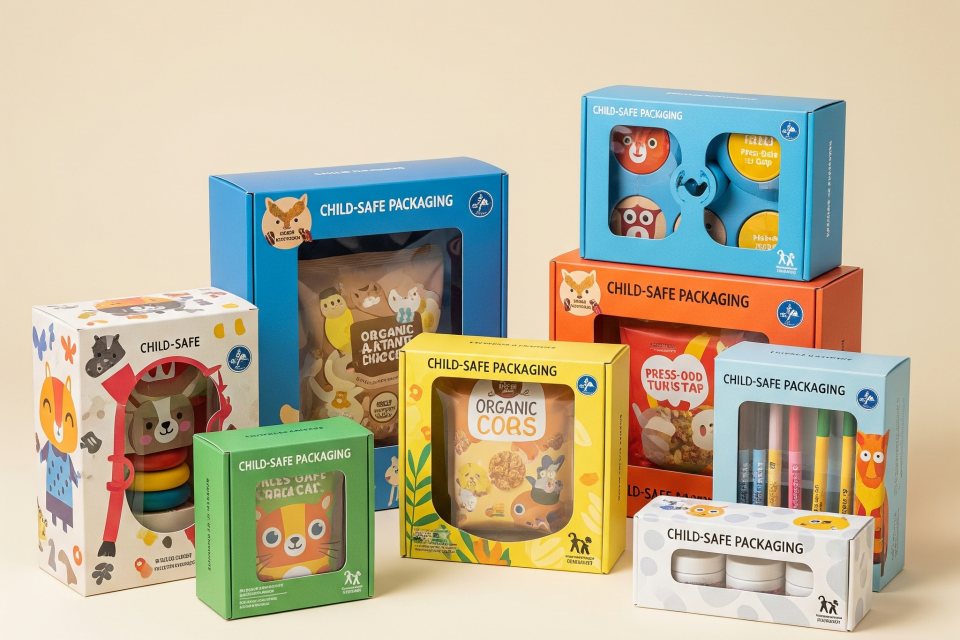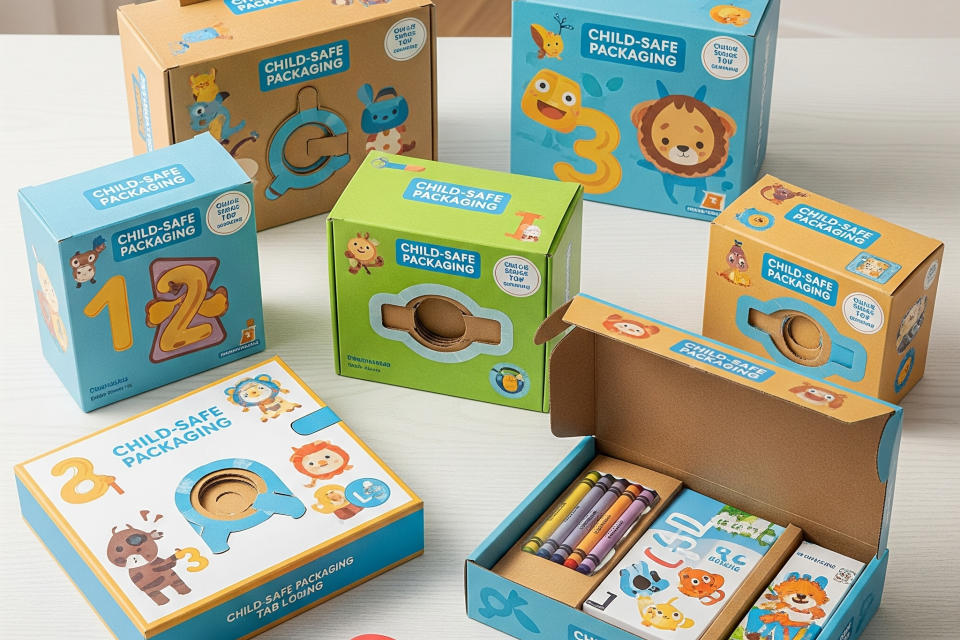What Makes Packaging Child-Resistant
What Makes Packaging Child-Resistant
Summary
Child-resistant packaging (CRP) refers to packaging designed to significantly impede access for children under five years of age while remaining usable for adults. This packaging type emerged as a public health necessity following the enactment of the Poison Prevention Packaging Act (PPPA) in 1970, which aimed to mitigate the alarming rates of accidental poisonings among young children due to hazardous household substances and medications. Prior to this legislation, thousands of children suffered serious injuries or fatalities each year, highlighting the urgent need for effective safety measures in product design.
The development and enforcement of CRP standards are primarily overseen by the U.S. Consumer Product Safety Commission (CPSC) and the Food and Drug Administration (FDA), which impose stringent requirements on manufacturers. The effectiveness of CRP relies on a combination of innovative designs and closure mechanisms that pose significant challenges for children to open, such as push-and-turn caps and complex reclosable containers. Recent advancements in CRP also include the introduction of smart packaging technologies and sustainable materials aimed at enhancing both safety and environmental responsibility.
Despite the proven efficacy of CRP in reducing accidental poisonings, challenges remain, including issues of user confusion, regulatory compliance, and the need for continuous innovation. Critics argue that while child-resistant features are essential, overly complex designs can lead to frustration among adults, potentially counteracting their safety purpose. Furthermore, the rising demand for sustainable practices and the complexity of global regulations present ongoing hurdles for manufacturers seeking to comply with safety standards while meeting consumer expectations.
Overall, child-resistant packaging represents a critical intersection of public health and consumer safety, necessitating a balance between accessibility for adults and security for children. As the market evolves, manufacturers face the dual challenge of adhering to strict regulations while also responding to growing consumer awareness of environmental sustainability and usability concerns, ensuring that child safety remains a top priority in packaging design.

History
The history of child-resistant packaging in the United States is closely tied to the implementation of the Poison Prevention Packaging Act (PPPA) of 1970. This significant piece of legislation was signed into law by President Richard M. Nixon on December 30, 1970, and marked a pivotal moment in public health and safety regulations aimed at protecting young children from accidental poisonings caused by household substances and medications.
Prior to the PPPA, accidental poisonings were a leading cause of injury among children under five years old, with state records indicating approximately 500 fatalities annually due to the ingestion of hazardous materials. The act was developed in response to a growing concern over the safety of household products, and it mandated that certain hazardous substances, including over-the-counter and prescription drugs, be packaged in "child-resistant packaging" (CRP). The U.S. Consumer Product Safety Commission (CPSC) was given the authority to enforce these requirements, which are designed to be significantly difficult for children under five to open while still being accessible for adults.
Over the years, the PPPA has evolved through amendments and expansions that have broadened the scope of products covered under its regulations, including additional hazardous items regulated by the Environmental Protection Agency (EPA). Innovations in child-resistant packaging have also progressed, transitioning from early designs such as push-and-twist caps to more sophisticated modern solutions that enhance safety and usability.
The impact of the PPPA has been notable; studies indicate that the use of child-resistant packaging has substantially reduced the rates of accidental poisonings among children in the United States. Despite ongoing challenges, including concerns about packaging recyclability and the associated costs for manufacturers, the law remains a cornerstone of public health policy aimed at safeguarding children from accidental poisonings.
Types of Child-Resistant Packaging
Child-resistant packaging (CRP) is designed to prevent young children, particularly those under five years old, from accessing potentially hazardous substances while remaining accessible to adults. The effectiveness of these packages is achieved through various innovative designs and mechanisms that cater to both safety and usability.
Reclosable Containers
Reclosable containers are intended for products that can be used multiple times. These containers typically feature complex closures that require a specific technique to open, making them difficult for children to manipulate. A common example of this type is the "squeeze tab to unscrew" cap, which demands a coordinated effort to open and can be securely closed after use.
Single-Use Containers
Single-use containers are designed to hold a product that is consumed in one go. They generally utilize more straightforward mechanisms but are still equipped with features that hinder children's access. Such designs often include tamper-evident seals or specially designed openings that require adult dexterity and understanding to access the contents.
Innovative Closure Mechanisms
Recent innovations in CRP include advanced closure mechanisms that offer heightened safety while also enhancing convenience for adult users. Examples of these mechanisms are the ergonomic push-and-turn caps and press-to-close zipper seals, which require both physical strength and fine motor skills to operate. These closures are beneficial for products ranging from medications to household chemicals.
Flexible Packaging Solutions
Flexible packaging is becoming increasingly popular for various consumer goods, particularly in categories where traditional rigid packaging may not suffice. Child-resistant mylar bags and pouches incorporate unique closure systems that require precise actions to open. Notably, Procter & Gamble's Child-Guard zipper technology employs multiple points of resistance that must be overcome simultaneously, making it particularly challenging for children while remaining manageable for adults.
Testing and Standards
All types of child-resistant packaging must undergo rigorous testing to ensure they meet safety standards. For example, packages are subjected to a series of opening and closing cycles that simulate regular use, ensuring that they maintain their child-resistant properties over time. Regulations, such as those outlined in 16 CFR 1700.20, set specific requirements for the design and testing of CRP to safeguard against accidental poisonings.
By integrating these diverse types of packaging and closure systems, manufacturers aim to create a balance between child safety and adult accessibility, addressing the growing need for protective solutions in households with young children.

Standards and Regulations
Overview of Standards
The effectiveness of child-resistant packaging (CRP) is governed by a variety of standards and regulations aimed at ensuring safety for children. The International Organization for Standardization (ISO) has established key standards, including ISO 8317, which specifies the performance requirements and testing procedures for reclosable packages designated as child-resistant. In the United States, ASTM International (formerly known as the American Society for Testing and Materials) also plays a critical role by developing and publishing standards such as ASTM D3475, which classifies child-resistant packaging and provides examples for better understanding.
Regulatory Bodies
Several regulatory bodies enforce compliance with child-resistant packaging standards. In the United States, the Consumer Product Safety Commission (CPSC) is responsible for enforcing regulations under the Poison Prevention Packaging Act (PPPA) of 1970. The Food and Drug Administration (FDA) additionally mandates specific regulations for child-resistant packaging, particularly for pharmaceutical and over-the-counter medications. These regulations are critical for safeguarding consumers, especially children, from accidental ingestion or exposure to harmful substances.
Compliance and Testing Protocols
Compliance with established standards is essential for manufacturers, who must follow rigorous testing protocols to assess the effectiveness of their packaging closures. For instance, a package must pass tests where 90% of participants can open it within specified time limits while still being able to secure it as child-resistant again. Moreover, adherence to international standards often aligns with U.S. requirements, with many countries adopting similar testing protocols to ensure safety across borders.
Certification and Legal Consequences
Manufacturers whose products meet specific child-resistant packaging standards receive certification marks, which signal compliance to both consumers and regulatory bodies. However, failure to comply with these standards can lead to significant legal consequences, including enforcement actions under laws such as FIFRA (Federal Insecticide, Fungicide, and Rodenticide Act) and the CPSA (Consumer Product Safety Act).
Common Challenges in Compliance
Manufacturers face several challenges in the compliance process, such as the need for design iterations if initial prototypes do not pass testing, keeping up with regulatory changes, and the high costs associated with testing and certification. These challenges can impact product launch timelines and overall market readiness.
Testing and Certification
To ensure packaging is child-resistant, various testing protocols and certification processes are employed. "Special packaging" is defined as packaging that is significantly difficult for children under five to open while remaining relatively easy for adults to access. For a package to be classified as child-resistant, at least 85% of tested children must not be able to open it within the first five minutes, and at least 80% must fail to open it within ten minutes. Adult-friendliness is also evaluated; at least 90% of adults must successfully open the package within five minutes, and if applicable, resecure it within one minute.

Challenges and Limitations
User Confusion
One of the significant challenges in creating effective child-resistant packaging (CRP) is the potential for user confusion. If the design of child-resistant closures is overly complex or lacks clear instructions, adults may struggle to open them, which can lead to frustration and unintended exposure to hazardous materials. Therefore, achieving simplicity and clarity in design is critical to minimize confusion among users, especially those unfamiliar with child-resistant mechanisms.
Design Balancing Act
Designing child-resistant packaging requires a delicate balance between accessibility for adults and difficulty for young children. The closures must be easy for adults to open while simultaneously posing a significant challenge to children under five years of age. This can be achieved through innovative mechanisms such as push-and-turn caps and squeeze-and-pull lids, which aim to delay a child's access to the contents of the package.
Regulatory Compliance
The landscape of regulatory compliance for child-proof packaging varies significantly across different jurisdictions, making it a complex issue for manufacturers. Each product category, from medications to household cleaners, is subject to its own specific set of safety regulations. Companies must navigate these intricate regulations and ensure that their designs meet the required safety standards to avoid legal repercussions and ensure consumer safety.
Testing and Certification
Obtaining child resistance certification can be a time-consuming and costly process. Packages must undergo rigorous testing to assess their effectiveness against children's ability to open them, which often requires multiple design iterations if initial models do not meet safety benchmarks. Moreover, changes in regulations or testing standards can necessitate updates to packaging designs, further complicating the compliance process.
Persistent Risks
Despite the advances in child-resistant packaging, unintentional poisonings remain a significant public health concern. In the United States alone, over 59,000 children require emergency room care each year due to inadvertent medicine poisoning, underscoring the importance of continually improving packaging solutions. Research indicates that while child-resistant packaging has significantly reduced instances of medication-related accidents, challenges persist in ensuring that such measures remain effective and relevant in a rapidly changing market.
Innovations and Future Trends
Sustainability and Material Advancements
The child-resistant packaging (CRP) market is undergoing a significant transformation, driven by sustainability and the integration of innovative materials. As consumer demand for eco-friendly solutions grows, manufacturers are increasingly incorporating recyclable and biodegradable materials into their designs, such as bio-plastics and plant-based fibers, without compromising safety. The introduction of multi-layer barrier structures and bio-composite films has enhanced product protection while supporting environmental goals. This shift towards sustainable practices is particularly evident in the pharmaceutical and personal care sectors, where companies are responding to pressure to reduce their environmental impact.
Smart Packaging Technologies
Innovations in smart packaging are shaping the future of child-resistant solutions. The integration of technology into packaging allows for enhanced security and traceability. For instance, smart caps equipped with sensors can alert caregivers if doses are missed or if tampering is detected, ensuring compliance and adding an extra layer of safety. Additionally, the use of digital tools and cloud services for monitoring usage patterns and environmental conditions is becoming more prevalent, allowing manufacturers to respond promptly to safety concerns.
Enhanced User Experience
Innovative design is crucial for balancing child safety with adult usability. New ergonomic designs, such as improved grip mechanisms and push-and-twist caps, are being developed to simplify the opening process for adults while maintaining child resistance. The focus on customization and branding also plays a significant role in product differentiation and marketing appeal, which is becoming increasingly important in a competitive market.
Regulatory Landscape and Market Growth
As regulations surrounding child safety continue to evolve and become more stringent globally, manufacturers are adapting their practices to meet these standards. This regulatory pressure, combined with the rising awareness of child safety among consumers, is propelling the growth of the CRP market. The market size is projected to expand from USD 28.61 billion in 2024 to USD 54.71 billion by 2034, reflecting a compound annual growth rate (CAGR) of 6.7%.
Future Directions
Looking ahead, the child-resistant packaging market is expected to continue its trajectory of innovation. The incorporation of advanced materials, smart technology, and user-centered design will be critical in developing solutions that are not only safe for children but also convenient for adults. The growing trend towards e-commerce and express logistics will further increase the demand for secure and tamper-evident packaging, particularly in sectors with stringent safety regulations, such as pharmaceuticals and cannabis. As manufacturers embrace these innovations, the industry is poised for robust growth and enhanced safety measures in the years to come.
